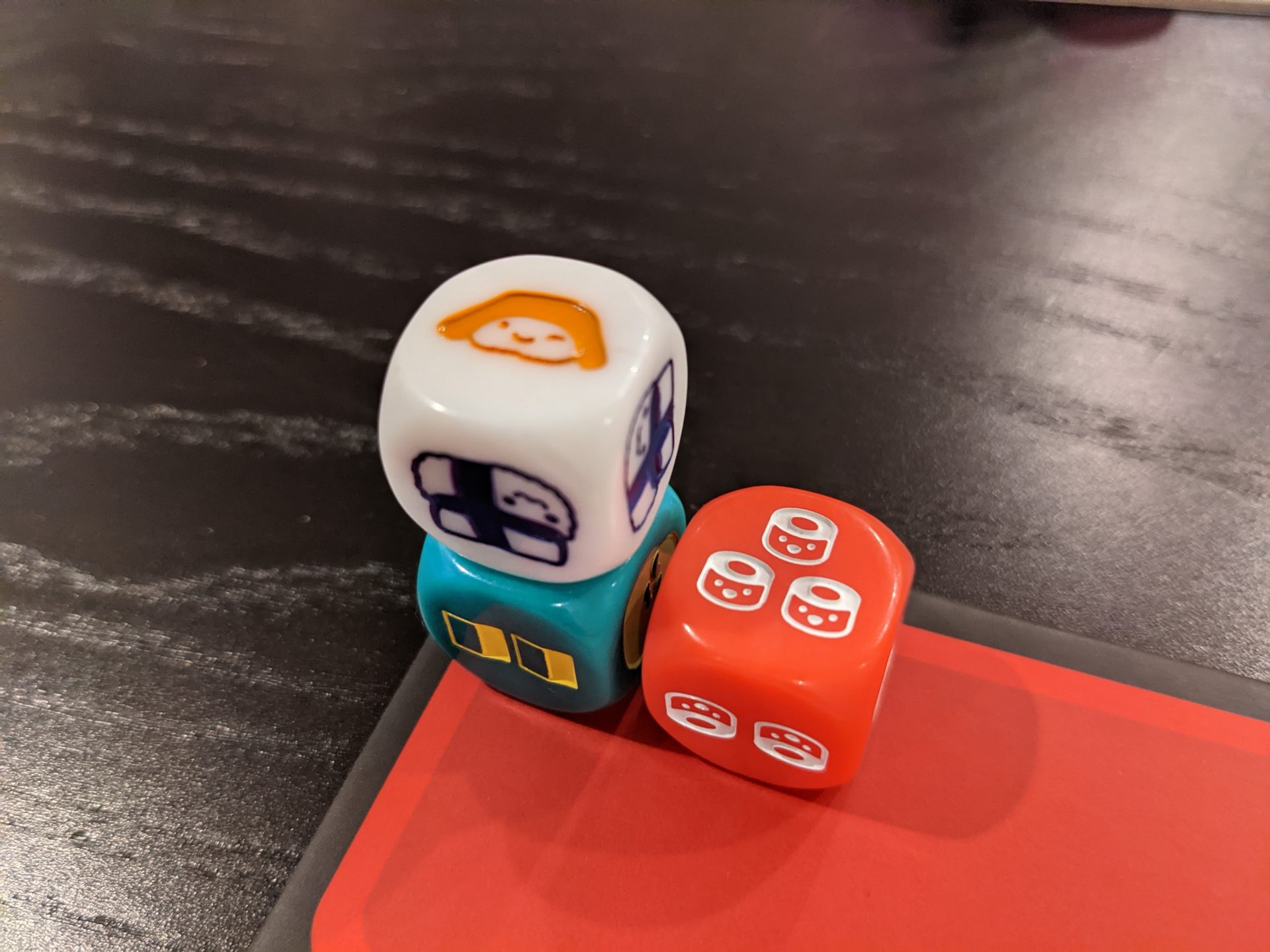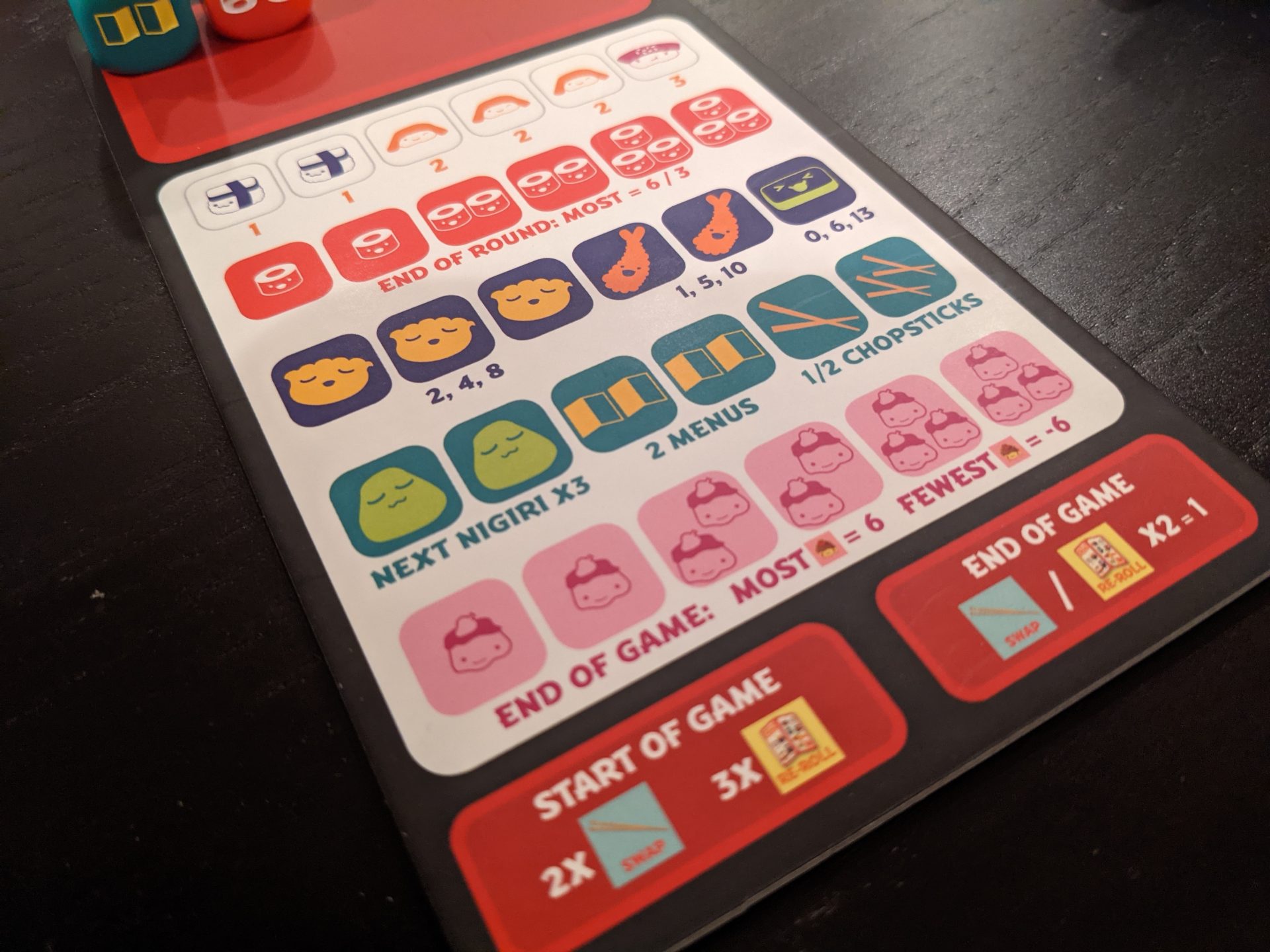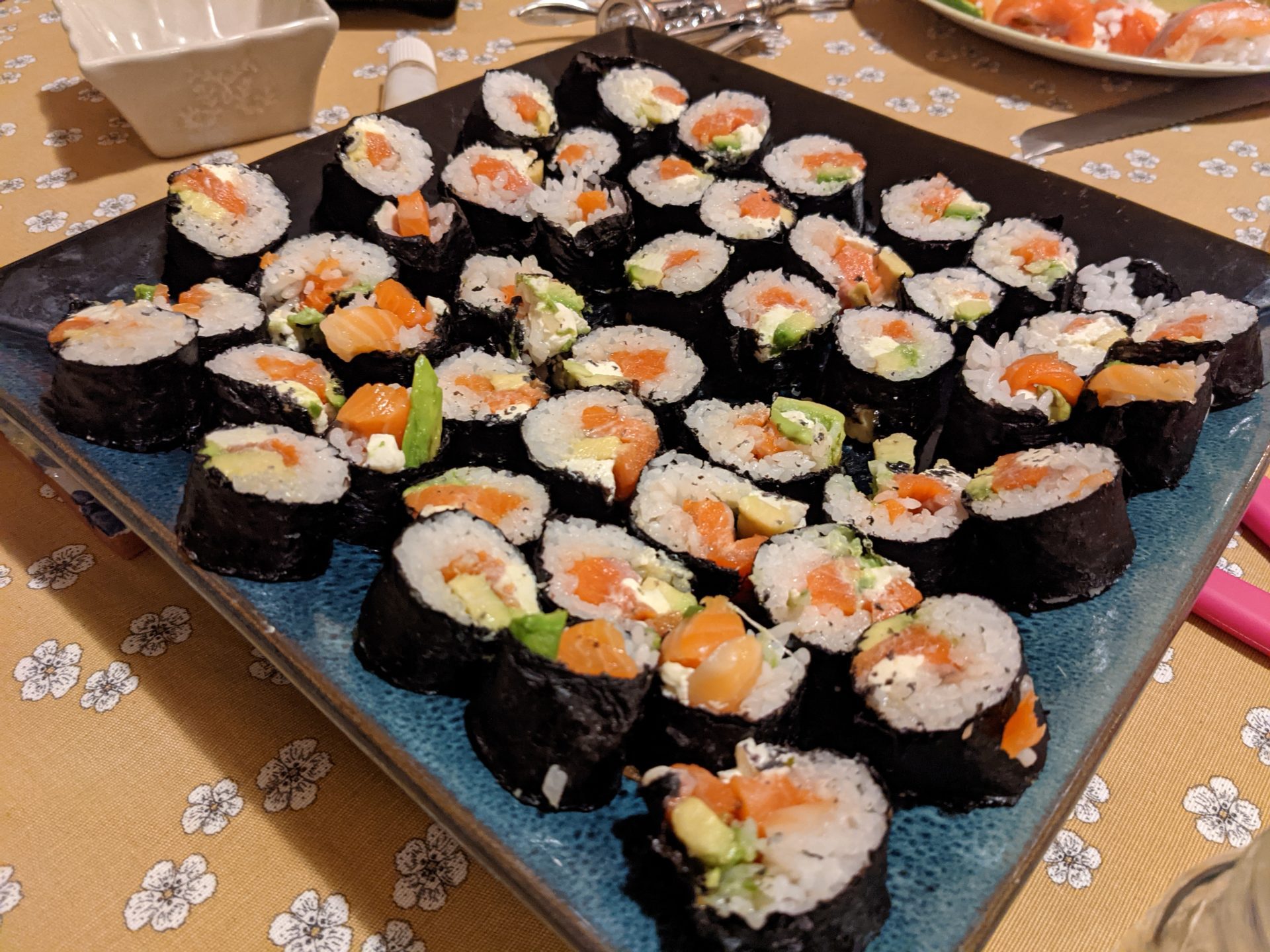Disclosure: Meeple Mountain received a free copy of this product in exchange for an honest, unbiased review. This review is not intended to be an endorsement.
“If I’m being really honest, I think Sushi Roll is better than Sushi Go! Party.”
So said Nora, the consumer marketing manager at Gamewright, when I chatted with her at Gen Con about Sushi Roll. I screamed blasphemy! I believe that Sushi Go! Party, with the dizzying array of different cards, ability to scale well to 8 players, and the moments that make the base Sushi Go! game shine, is a top shelf party experience.
Then I played Sushi Roll, the 2019 dice game based on Sushi Go!, a single time with my wife recently. And I had to admit it: Nora was right.
The reason why I think Nora was correct, though, is interesting.

Those Dice
If you have never played Sushi Go!, let’s start there. It’s a simple card game that asks players to try to score points by picking one card from a hand of cards and then passing the remaining hand of cards to the player on their left, a mechanism commonly known as “card drafting”. By collecting cards in this way, a lot of different mechanics come into play: some cards score based on who has the most of them. Some score by stacking them on top of nigiri cards. Some score based on having the most of its type at the end of the game, not the end of the round.
None of it is hard. Anyone aged 8 and up can easily decipher Sushi Go! after a few plays. It’s short, accessible, and can be packed into a purse. The base game was so good that Gamewright built this into a party version for 8 players instead of 5, and in a stroke of genius, called that game Sushi Go! Party. (Genius, I say!!) That version expanded the types of cards available, stretching it out to the point where the setup variability is almost unbeatable for a party game. I’ve owned it for 5 years and still have not used every card type.
But as Gamewright says in the Sushi Roll instruction manual: everyone loves Sushi Go!, and everyone loves dice.
So, adding dice is a no-brainer, and in Sushi Roll, Gamewright replaces the cards with dice. So far, so good. But then, by using dice, they made one more change and it is literally a game changer: when a player selects a die from their current dice pool, they pass their remaining dice to the left…and then, each player re-rolls all of their remaining dice.
Correct. Sushi Roll makes only one real change to the rules, but that one change makes Sushi Roll a completely new experience.

In the original, it wasn’t necessarily good or bad that the cards dealt in a round might be heavy on desserts, or low-scoring (egg) nigiri, or sashimi. It was that the overall card distribution wouldn’t change in that round, and that no one knew what was coming to them in a future hand in a round.
With Sushi Roll, every single turn feels fresh, featuring interesting decisions, but they don’t slow down the super-quick gameplay. And the way turn mechanics shake out, the first player has a distinct advantage: when looking at everyone else’s dice, they may swap a die on their conveyor belt (where rolled dice are on display to all players) with another player’s die. Luckily, this rotates every turn, so all players will have this advantage in equal waves.
One other thing that feels really fresh in this game are the dice. The dice in Sushi Roll feel just a little heavier than normal 6-sided dice and the cute art from the base game is recognizable (not a standout, just recognizable) from Sushi Roll. The color mix makes the type of die easily distinguishable when removed from the dice bag or from across a table, provided you are not colorblind. But the weight of the dice feels great, a little chunky and a little heavy, so rolling a full complement of dice each round is a haptic joy. (Nora from Gamewright confirmed that these dice are a tad heavier than normal 6-sided dice.)

Scaled Up, Scaled Out
Whenever I’ve played Sushi Go! Party at 8 players, I always feel a sense of accomplishment. It’s tough to get 8 players together any time—especially in the last 18+ months—but whenever that has included Sushi Go! Party I was guaranteed to have a great time.
But how often was that, really? Maybe a couple of times a year.
With Sushi Roll, I have to admit the truth: 2-5 players is more realistic for a normal night of gaming. At home, my wife and daughter will happily join me for a game of Sushi Roll, and the game scales well thanks to diminishing numbers of dice given to each player as the game gets larger. So, at 2 players, each player starts a round with 8 dice and works their way through a back-and-forth swap meet. At 5 players, each player starts a round with 5 dice and that probably fits just fine.
And Sushi Roll plays great; my first game was done in less than 20 minutes, despite having to roll the dice 24 times across 3 rounds. And rolling these dice feels good. Getting a squid nigiri on top of a wasabi on your last turn of the round still feels great, as does achieving the slightly-easier sashimi requirement, when you find a third sashimi for a 13-point score. Dessert is still a race meaning the last turn of a round will likely decide who gets that 6-point maki bonus.
Phil Walker-Harding (Gizmos, Imhotep: The Duel, Silver and Gold, Snakesss) has done it again with Sushi Roll, thanks to his signature design philosophy: high accessibility to gamers of all shades. Everyone will enjoy this game!












Add Comment